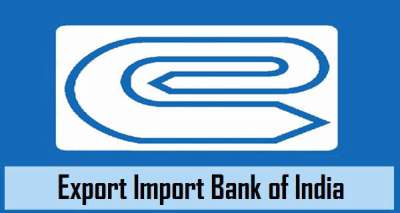Export Import Bank (Exim Bank) | History | Need | Functions
Table of Contents
 History of Exim bank:
History of Exim bank:
For a long time, the need for a separate institution for export finance was not felt in the country due to the closed market conditions and India’s limited share in world export. It is only during the 1980s, the need to increase India’s export was felt, owing to increased foreign debts, which compelled India to go for an Apex institution and the Export Import Bank (Exim Bank) was set up in 1982.
Need for Exim Bank:
Besides, the change in the world market and the creation of World Trade Organization (WTO) compelled India to give a fillip to its export finance. All along, it was felt that the Indian exporter needs only rupee finance. But it is only due to a change in the export policy of promoting more value added export, the role of Exim bank was very much felt. It is time Exim bank provided finance for research and development as indigenous research plays a crucial role owing to intellectual property rights.
Functions of Exim Bank
The following are the functions of Export Import bank:
1. Finance for exports and Imports: Exim bank helps by providing finance for exports and imports of goods as well as services from India. One of the major export policies adopted by government of India is the export of value added items. For example, all along we have been exporting Hades and skins from India. Now, it is ‘processed leather’ in the form of leather goods. So, the exporter who was earning 1 or 2 dollars while exporting Hades and skins will now earn 25 to 30 dollars when he exports in the form of leather goods. Similarly, import of raw materials such as gold will be financed by Exim bank, since it will be exported as jewels which is again a value added export.
2. Finance on deferred basis: Exim bank provides finance on deferred basis for importing capital equipment and other machinery. The cost of capital equipment in foreign countries will be more and the Indian importer cannot afford to pay lump sum payment in foreign exchange. The Exim bank provides guarantee on behalf on the importer and enables the importer to make payment on installment basis to the foreign exporter. Or, the bank itself may pay in bulk to the foreign exporter and receive installment payments from the Indian importer.
3. Lease Finance: It provides lease finance for importing capital equipment. Under cross border leasing, the lessor may be in a foreign country, while the lessee will be in India. The Exim bank helps the Indian lessee in obtaining the capital equipment on lease by making the lease payment in terms of foreign exchange. It also helps for import leasing, wherein both the lessor and lessee will be Indians but the equipment imported on lease may be from U.S. A or U.K.
4. Finance to export projects: Export projects in Third World countries are financed. India has taken up various export projects in Third World countries, such as railway project in Tanzania. Similarly, projects on some of the oil wells in Kuwait and Iraq taken up by Oil and Natural Gas Commission (ONGC) are also financed by Exim bank. All the necessary equipment and the manpower required for such projects will be financed by the Exim bank.
5. Line of credit: The Exim bank provides line of credit to foreign importers so that exports from India can increase. Under line of credit, exim bank will provide finance to the Central bank of the borrowing country which in turn will provide to the commercial bank and ultimately the credit will reach the importer. This kind of credit is safe as there is guarantee of funds at every stage.
6. Refinance in foreign exchange: The Exim bank obtains bulk loan in foreign currencies in the foreign exchange market and provides refinance to the financial institutions, providing export finance. Different types of exporters may require different foreign currencies and these are obtained by the Exim bank at a competitive interest rate and are given to commercial banks for lending to exporters. It is due to this, the commercial banks are able to provide pre-shipment and post-shipment finance to different exporters.
7. Contribution to Equity fund: The Exim bank also contributes to the shares, debentures of Indian companies involved in exports. Export companies while raising capital, may issue shares which may be partly financed by Exim bank. The bank may extend this facility as a temporary finance as it will not retain the shares permanently. As a part of investment policy or by way of portfolio investment, it may invest in the shares and debentures of companies involved in exports.
8. Consultancy Services: The Exim bank also provides technical, administrative and other assistance to exporters. Export projects are analyzed by the Exim bank from the point of view of technical, managerial, marketing and financial feasibility. When it finds a project viable, on the above grounds, it will not hesitate to fund it.
Apart from the above assistance, it is also providing discounting facilities for export bills. There is also export finance for computer software exports. The exporters are provided with market development assistance so that they can undertake advertising and sales promotion activities in foreign countries. The bank signed a memorandum of understanding (MOU) with European Bank for Reconstruction and Development. The total assistance provided by the Exim bank has exceeded more than Rs. 3,000 crores. In the coming years, the bank is likely to play a major role in the export of automobiles and other non traditional items.


